Radon: Your Uninvited, Unseen & Unwanted House Guest
So what’s all this hubbub about radon? What the heck is it? Do you have it in your home? How do you get rid of it?
Before we get to all that, let’s first make sure we’re all talking about the same thing.
We’re talking about radon. The gas.
We’re not talking about Rodan, the irradiated Kaiju monster who’s been known to terrorize Japanese cities from time to time with his good pal, Godzilla.

You likely don’t have a Rodan problem in your house, but if you do, I’m not sure I can help you. I recommend you call some Japanese scientists and let them figure it out.
We’re also not talking about Rodin.

He was a French sculptor born in 1840. You may or may not know his name, but you probably know his most famous work, The Thinker.

If you have a Rodin in your house, then congratulations – you are very wealthy, and you have impeccable taste in art!
If, however, you have Rodin in your house, then I encourage you to contact a priest, because madam, you are dealing with a ghost.
Okay, back to radon.
In the Northeast, home of The Navage Patch V.1.0, radon is more of a problem than in some other quadrants of the country, and thus, it is more well-known.
But that didn’t stop me from knowing jack squat about it when we moved to Connecticut in 2013. Hey, I grew up in Connecticut, and we didn’t have a radon mitigation system back then, so as far as I was concerned, radon didn’t exist! Rodan, on the other hand, was one of my faves on the weekly Creature Features when I wore Wrangler corduroys and a bowl haircut.
I remember touring the house back in the summer of ’13. When we got to the basement, our agent pointed to the far corner and brought our attention to the radon mitigation system. She explained that the owners had installed it one year prior.
I’d never seen such a gizmo. I was intrigued. So I did some quick research to familiarize myself with the subject of radon.
What is Radon?
Radon is a colorless, odorless, tasteless radioactive gas that lurks in soil and infiltrates houses through their concrete (or dirt) foundations.
It is also practically everywhere. We’ve been living with it in trace amounts since the dawn of humanity, so it’s not some new thing that’s suddenly jumped onto the scene.
Radon outside – out in the open – is harmless and not a concern. But a house acts like a radon trap, and unless properly vented, the radon can build to levels the EPA has deemed dangerous to humans.
Prolonged inhalation of the gas has been linked to various cancers and tumors.

It is reported to be the second-leading cause of lung cancer after cigarette smoking.

All of this might have remained off my radar were it not for a rare Connecticut earthquake that struck while we were living in India, a year before we moved back to America and bought the house. The quake shook the soil (duh) and radon levels across the region shot up. It must have been during this time that the previous homeowners had the house tested for radon and then had a mitigation system installed.
Do I have a Radon Problem?
You might, but testing is the only way to know for sure. Here is a link to in an interactive map that shows the average radon level for each state. I’ve included the static picture below.

Sorry Alaska – you’e the worst, followed by South Dakota in the contiguous United States.
Radon is extremely variable. You may have a problem, but your neighbor may be in the clear. There have even been reports of one side of a duplex having elevated levels while the other side was fine.
There are two routes to choose when testing your radon levels.
- You can call a professional, and they will come to your house with an electronic meter which will take a radon-level reading over the course of 2 or 3 days.
- You can do it yourself with a radon test kit.
There are now two types of radon tests available for the DIYer.
The first type is inexpensive, but you’ll have to wait to get your results, as you’ll need to send your sample to a lab to be analyzed.

The second type is a more expensive digital meter, but there’s no need to ship a sample off to a laboratory. It also allows for more frequent and longer-term monitoring, so you’ll have a much better understanding of your home’s radon levels. Radon ebbs and flows with the seasons and even with rain and humidity, so having the ability to perform multiple tests is really a huge plus.

Once you have your results, you’ll know if you should act or not.

When we had our new home tested as part of our inspection, we discovered it had an average reading of 3.1 pCi/L (picocuries per liter) over the course of 2 days. Looking at the hourly data, there were spikes approaching 5 pCi/L. While the EPA would say we didn’t need to mitigate, Handan wanted to have a system installed since I spend so much of my time inside and in the basement working on projects for the blog.
Hey, if my babes wants a radon mitigation system, who am I to say no?
I contacted the company that did the test – Inspectics – and asked them to install a mitigation system. They are an Atlanta-based company, and they have the highest rating in the area for this sort of work.
How Does a Radon Mitigation System Work?
In our new home, we have what’s called a sub-slab depressurization mitigation system. Though it took the guys from Inspectics a full day to install, it’s a simple concept. They drilled two 6-inch holes through our basement slab and then scooped out the gravel and dirt below to form a small chamber. They then covered and sealed the holes with PVC pipe. One pipe leads into the other and then outside, where it connects to a fan. The fan creates negative pressure in the two collection chambers which draws in the radon gas. From the fan, a discharge pipe leads up and over the roof-line where the gas is discharged.
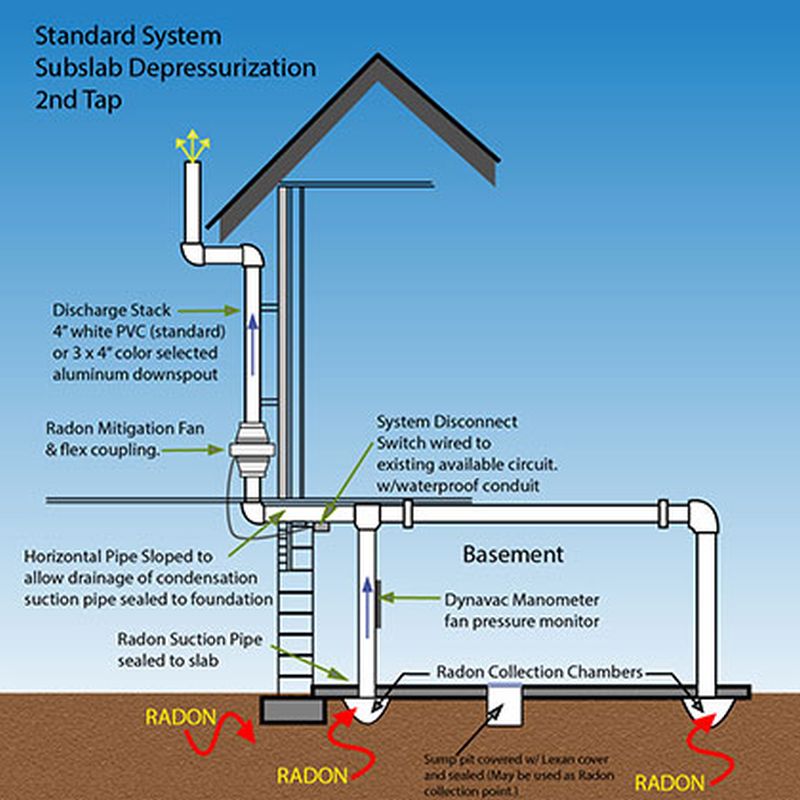
Our Radon Mitigation System
Unfortunately, on the day of installation, our house was a zoo. We had flooring contractors measuring for quotes, electrical contractors coming to give estimates for the basement job and a new internet service provider getting us wired-up inside and out.
That left me no time to observe and photograph the Inspectics crew, which is a shame, because they did fantastic work! I love working with small companies, because the owner is always involved in the work. Inspectics was no exception. The owner’s name is Fedor, and he completed the job over the course of a long and hot day with just one other guy to help him. These guys deserve every 5 star rating they have on Google.
This is the result of Fedor’s labor.
The first hole is near a wall in the middle of the basement.

This manometer lets me know the system is functioning properly.

The liquid is higher on one side because of low pressure inside the pipe created by the fan drawing air upward and outward. If the fan failed, then the pressure inside the pipe would equalize with the pressure outside, and the two columns of liquid would be at the same level.
The pipe takes a bend and runs toward the side of the house.

Once it hits the side wall, it takes a turn towards the back of the house, and that’s where it meets up with the pipe from the second collection chamber.


Here is where the collection pipe exits the house.

On the other side of the wall is the fan. This draws the radon from the collection chambers and pushes it up the vent pipe towards the roof.


Since installing our radon mitigation system, we’ve gotten our readings down towards 1 pCi/L. Once I get our digital radon meter, I’ll be able to keep an eye on it year-round. I’ve no doubt it will stay below even the WHO’s more stringent action level, but I’m betting it will stay below 2 pCi/L as well.
Though our house didn’t have a big radon problem, I feel good about installing our system, because it has given Handan peace of mind, and you can’t put a price on that!
When talking to Fedor at the end of the day, he said he’s seen readings all over the place in the Atlanta region. 10 pCi/L, 20 pCi/L, and even a couple with readings over 100 pCi/L. Yeesh, I can’t imagine living in that!
Have any of you tested your house for radon? If so, what was your average reading and where do you live? Please share your findings with us in the comments section!
Consider this post a friendly little PSA. Not everyone is aware that they may be living in a carcinogenic environment!
We’ll be back real soon with more progress on our new home. It’s been a busy week – so much so that I didn’t have spare minute to write until just now! But we have so much to show you. We can’t wait for you to see it all! 🙂


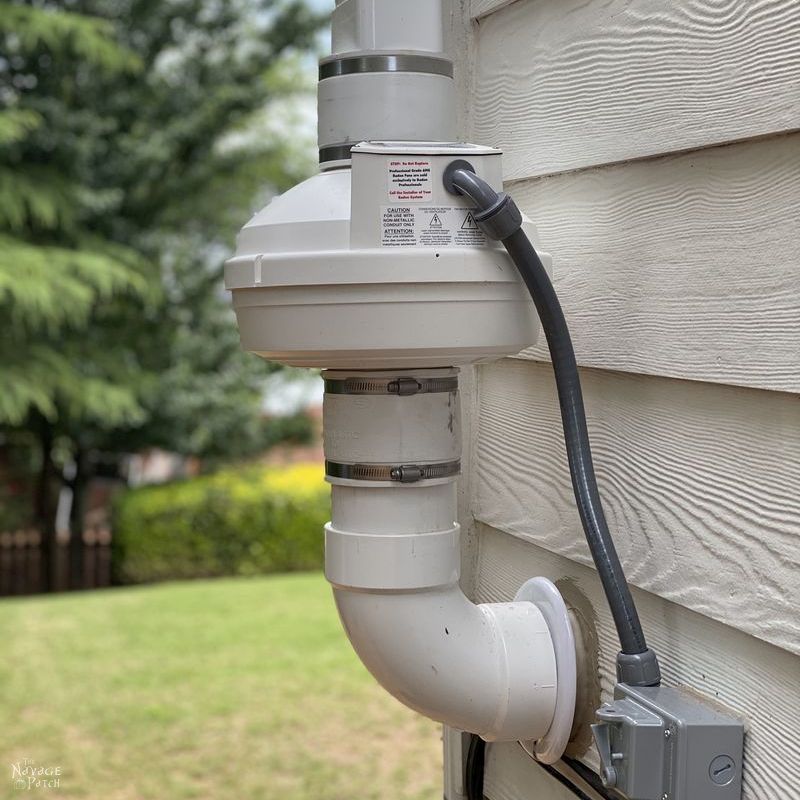


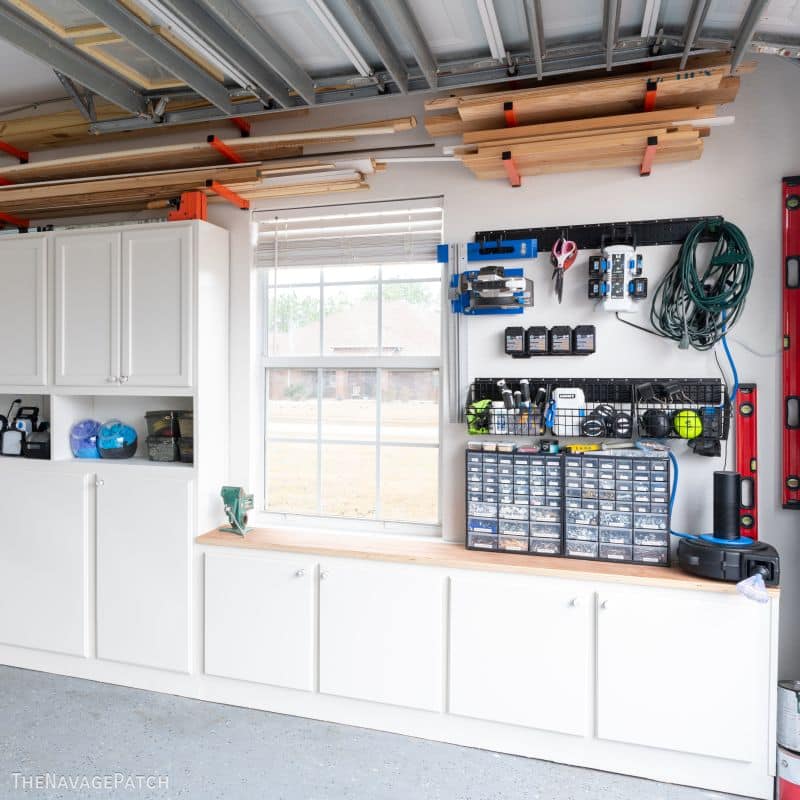
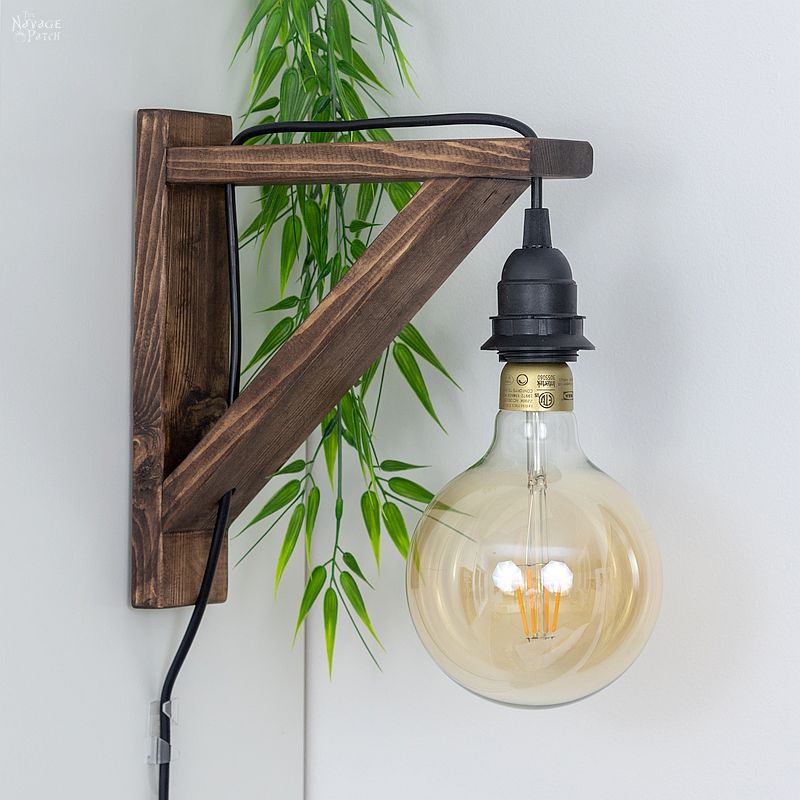

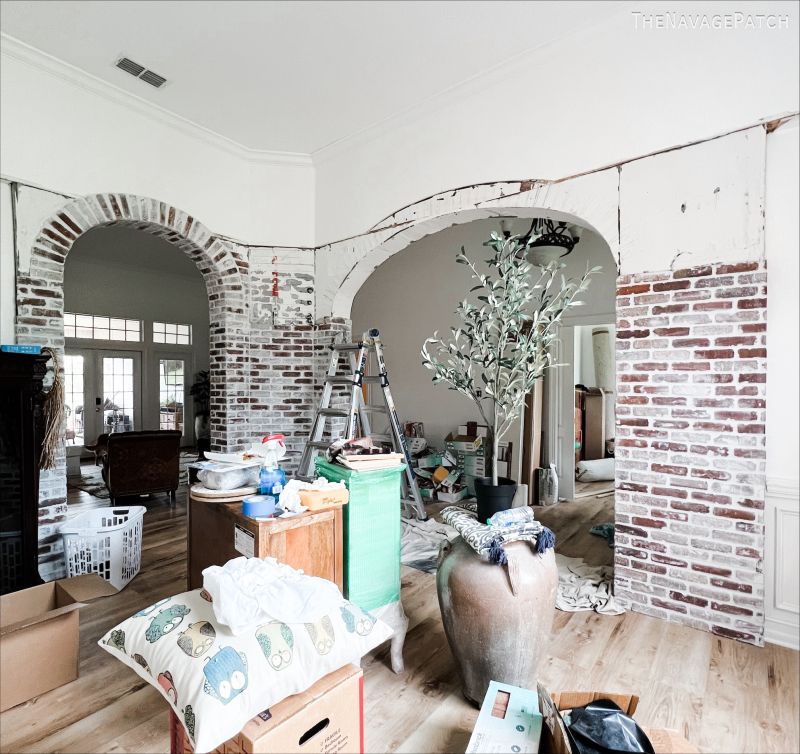


Hi Greg,
We bought our home in “05” The inspector did radon test before closing was completed, the first time we heard of radon. It was a 6, so the seller had to pay for it. It was done after we moved in, by a guy that explained all about how it can cause cancer. At one point, he said he was going out for a cigarette, where he continued his conversation about lung cancer on our deck.? He didn’t miss the irony of this, but kept puffing away. It’s scary to think about, but feel better having it done.
Greg I forgot to say I live in Harrisburg PA
LOL, I can picture him now!
I bought my house in 2014. Older house in a neighborhood and I have a mitigation system as well. The only thing that annoys me is the constant fan outside, but tolerable since my babies live with me. Thanks for the post.
Exactly – it’s worth it for the protection and peace of mind! 🙂
I see the vent terminates near a window. Are you advised not to open the window?
They never mentioned anything about it, but regardless, that’s a master bath window that doesn’t open, so all is good.
Our house also has a radon system. At this time we noticed that meter levels are equal and worried it is not functioning properly. Can’t make out who installed system. Who do we call to have it checked and I wonder how much it costs. Anyone have any idea?
Hi Donna, just Google “radon mitigation system installer near me” and call the one with the highest reviews. You likely need a new fan. First I’d check to make sure your current system is in fact plugged in and that it hasn’t tripped a breaker. Might save you having to pay a pro!
Call the Realtor you bought your house from. I am sure he or she would be able to tell you who to call. Hope that helps. Have a great day!
.7 North Central Idaho. Friend down the road had higher levels and had to install a mitigation system.
Another approach that is more economical is to install a vent in the basement (if you have a basement, that is), or you can keep a window open just a little bit. The gas will dissipate. Investigating the locations of uranium ore during the selection of an area to live is another way to avoid dealing with radon. I am a Nuclear Medicine Technologist, and we discussed Radon gas at length while learning about radioactive materials and radiobiology. Best of luck with the mitigation system, it looks like it should work very well.
That is a very practical tip, Cathy – thank you!
Thank you for this very useful and important piece of information.
You’re welcome, Susan! 🙂
Hi there, Just subscribed to your blog, and I’m glad I did! I’ve ordered a Radon test kit. Been in our house for about seven months now. Will be interesting to see if there’s Radon about. Thanks!
Fingers crossed you’re in the clear!
Timely post, we just transferred to WI and our new rental has a basement and since my hubby has been working with environmental issues in military housing for his last duty station he’s all hyped up about radon. lol He asked our new landlord if he’d ever had it tested and his response was no and he seemed to think that since the basement is partially finished it can’t be an issue (wrong). We talked with him about it and he seemed open to having it tested, but we’re not sure he’ll actually follow through so we may get the DIY kit ourselves for peace of mind. He’s very on top of upkeep otherwise so I feel confident if testing comes back high he’d have something done about it. A story from a hubby work experience was a home that had a dirt floor basement and had low levels upon testing and they had the home raised and the basement finished with concrete, tested again and the levels were high enough a mitigation system had to be installed so you just never know! Our last home in MA also had a basement but we didn’t know much about radon and once hubby started learning about the severity of it he always wished he’d had it tested. Nobody wants to get cancer while having fun in their workshop or in our case part guitar/music room *and* workshop! lol Thanks for sharing!!
The good thing about radon and landlords is that I would think it would be hard for them to say no to a mitigation system if you can prove their property is emitting cancerous gas. But yeah, it’s an issue that most people are blithely unaware of. Good thing the hubs is on it!
Hi Greg,
Great post! We just got our results back from doing the 90-day puck test in our basement over the winter months when doors are mostly closed. We’re okay as it came in less than half of the allowable in Canada, but we will do another one again this winter. I am in real estate and would like your permission to share some of your information and pictures please. Thanks.
Hi Greg,
I recently bought a house in Colorado that came with a Radon mitigation system, and as I spend a lot of time in my basement office, it gives me peace of mind. I am perplexed by one aspect of the system, the constant flow of water in the system pipe.
If Radon is a gas, why does the system have water running in the pipes, you didn’t mention water as part of your system. Should I be worried as this might be an issue that I need a professional to look into as it’s not normal?
Thanks for your wisdom,
Anita
Hi Anita, I’m certainly no expert on all radon systems, but the two I’ve owned do not have water in them. I’d suggest calling a radon mitigation company in your area and asking them to come out for a look. At the least, you’ll understand what kind of system you have and how it works. Good luck!